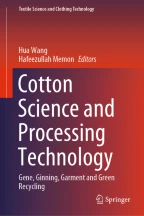
Cotton is the most important and widespread natural textile fiber in the world. Across 75 countries, the production of cotton crops provides income for more than 250 million people. Approximately half of all textile products are made of cotton in the form of apparel, home textiles, and industrial products. As all agriculture crops, cotton is also dependent on the climate conditions, soil quality, and water in which it is cultivated. All of these factors contribute to the diversity of cotton fiber properties. This chapter covers a wide range of essential segments related to cotton production, its structure, and different quality parameters. Best management practices result in better yield and quality of cotton fiber. This chapter also covers the important aspects of BMPs for cotton fiber cultivation. BCI, the better cotton initiative, is also one of the initiatives to make better sustainable cotton production. To enhance biodiversity and to maintain biological cycles, organic cotton can play an important role. This category of the cotton crop is produced with non-genetically modified plants, and by avoiding the use of any fertilizers or pesticides during its production. Keeping in mind its pivotal role, this chapter has also included the latest advancements in organic cotton.
This is a preview of subscription content, log in via an institution to check access.
eBook EUR 93.08 Price includes VAT (France)
Softcover Book EUR 116.04 Price includes VAT (France)
Hardcover Book EUR 158.24 Price includes VAT (France)
Tax calculation will be finalised at checkout
Purchases are for personal use only